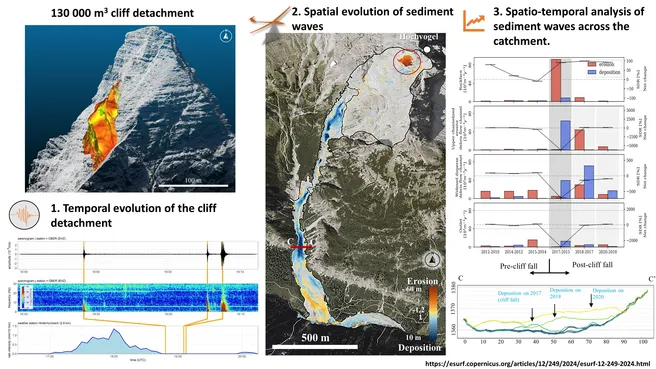A strong collaboration between members of the Landslides group resulted in a new publication analysing the impact of the 2016 cliff fall at the Southwestern slope of Hochvogel (DE-AT) on the subsequent massive sediment redistribution. The publication by Natalie Barbosa co-authored by Johannes Leinauer combined seismic data to decipher the temporal evolution of the cliff fall and high-resolution photogrammetry to determine the general rockfall activity across the summit and quantify changes in sediment redistribution before and after the cliff fall. This publication provides unique generic information on spatial and temporal patterns of rockfall detachment and massive sediment pulses in highly sediment-charged alpine catchments. Additionally, it presents a successful interdisciplinary and collaborative research that closes the gap between high temporal and spatial resolution.
The multi-stage detachment of 130 000 m3 of dolomite rock occurred over two days by a minimum of 6 rockfalls. The subsequent sediment waves exhibit reaction times of 0-4 years in response to the cliff fall sediment input and relaxation times beyond 10 years. The sediment waves manifest with faster response times of 0-2 years in the upper catchment and over 2 years in the lower catchments. The results present the first steps toward a better understanding of the role of sediment input in the frequency, magnitude, and persistence of sediment waves in alpine catchments.
https://esurf.copernicus.org/articles/12/249/2024/esurf-12-249-2024.html
